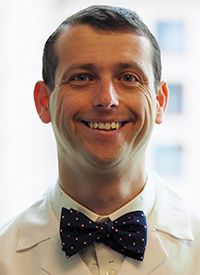Article
Sarcoma, the “Forgotten Cancer”: Examining What’s Needed to Improve Care
Author(s):
Sarcomas, all together, have an incidence of less than 5/100,000 persons per year, according to the Surveillance, Epidemiology, and End Results Program. Compare that with breast cancer, which impacts 129.1/100,000 women per year, or lung cancer, which has an incidence of 53.1/100,000 persons per year
Roman Groisberg, MD

Sarcomas, all together, have an incidence of less than 5/100,000 persons per year, according to the Surveillance, Epidemiology, and End Results Program (SEER). Compare that with breast cancer, which impacts 129.1/100,000 women per year, or lung cancer, which has an incidence of 53.1/100,000 persons per year. Put another way, 1 out of every 8 women will be affected by breast cancer, which means that almost everyone knows someone who has been affected by that disease. You can start to see why the world doesn’t pay much attention to sarcomas, which account for less than 1% of all cancers.
This is complicated by the extreme heterogeneity of this disease group—sarcoma is not 1 disease. More than 50 different kinds of soft tissue sarcomas (STS) and about 20 different types of bone sarcomas exist. Some subtypes are so rare that only a few dozen individuals in the United States are diagnosed each year. Ask the average non-oncologist physician and few could even tell you what a sarcoma is: a tumor arising from tissues of mesenchymal origin, or connective tissues. As such, few research dollars flow toward the study of sarcomas, and where there are few dollars, there are few researchers.
The few physicians and researchers who venture into this realm have 2 choices: focus their efforts on studying sarcomas, perhaps STS, or focus on 1 or a few of the more common subtypes, such as gastrointestinal stromal tumors (GIST). Prior to the modern genomic era, sarcomas were lumped together, and clinical trials that were conducted included all subtypes. After 50 years of this approach, we have little to show for it.
The first drug approved for patients with sarcomas was doxorubicin in the early 1970s. To this day, the agent remains the gold standard for frontline therapy. Another decade passed and dacarbazine was introduced to the paradigm in the early 1980s; this was followed by ifosfamide later in that decade. For nearly 2 decades that followed, sarcoma research focused on combining these 3 drugs in every which way.
Over the past 20 years, 5 other agents have been added to the armamentarium: gemcitabine, docetaxel, pazopanib (Votrient), trabectedin, and eribulin (Halaven). With the failure of olaratumab (Lartruvo) in 2018, it appears that the era of “lumping” and developing drugs for all sarcomas has come to an end, as it is unlikely that another broadly-acting chemotherapy will work for “all” sarcomas. Even trials that start out as “all-comer” are getting narrowed down as efficacy data emerge. Right about here, most pharmaceutical company executives will stop reading. Why invest millions of dollars in developing a drug that won’t even cover 1% of all cancers?
Here, we enter the modern era of precision oncology; this is not defined by the histology, but by the genomic mechanism underlying that tumor. For lung cancer, this means subdividing 1 disease into an ever-expanding list of targetable driver mutations: EGFR, ALK, ROS, RET, MET, BRAF, NTRK, and KRAS. For sarcomas, it means the reverse: taking all the histologic subtypes and finding a driver for each one. We have seen success in KIT and PDGFR drivers in GIST, TSC1/mTOR in PEComas, RANKL in giant cell tumor of bone, CSF-1 in PVNS, ALK rearrangement in IMFT, PDGFR in DFSP, and c-MET in ASPS.
Conducting clinical trials in this manner is an agonizing and arduous task. Given the rarity of any subtype, these targeted trials take a long time to accrue. The phase 2 AMPECT trial (NCT02494570) using nab-sirolimus (ABI-009) in malignant PEComas started accruing in 2015, and by 2019, only had 31 evaluable patients. Similarly, the SMARCB1-driven epithelioid sarcoma arm of the tazemetostat (Tazverik) basket study accrued 62 patients between 2015 and 2017. Such efforts require international collaboration, time, and patience, but are necessary to move the needle forward for diseases with no established standard of care.
Foundations and advocacy groups play an important role in coordinating such trial efforts. By connecting with patients and making them aware of availability, they drive accrual to subtype-specific trials, increasing access for the patients and helping answer important therapeutic questions. As sarcomas are a forgotten and orphan group of diseases largely ignored by big pharma, foundations are stepping in and playing a role in developing therapies. Target Cancer Foundation, a nonprofit representing patients with rare cancers, is conducting an innovative study called TRACK (Target Rare Cancer Knowledge; NCT04504604) that brings cutting-edge personalized cancer care to patients nationwide, regardless of their location or access to a dedicated sarcoma center.
Awareness is the first step to addressing “forgotten” cancers. Referral of patients to centers with clinical expertise in sarcomas is critical. Data suggest that patients have better outcomes when treated by dedicated sarcoma specialists and multidisciplinary tumor boards.1 Such centers are more likely to have access to sarcoma-specific clinical trials, benefiting patients with sarcoma now, and in the future.
Reference
Blay J-Y, Soibinet P, Penel N, et al. Improved survival using specialized multidisciplinary board in sarcoma patients. Ann Oncol. 2017;28(11):2852-2859. doi:10.1093/annonc/mdx484
Roman Groisberg, MD, is a medical oncologist and director of the Sarcoma Program at Rutgers Cancer Institute of New Jersey and an attending physician at Robert Wood Johnson University Hospital, an RWJBarnabas Health facility. His clinical expertise is in melanoma, sarcoma, and clinical trials.








